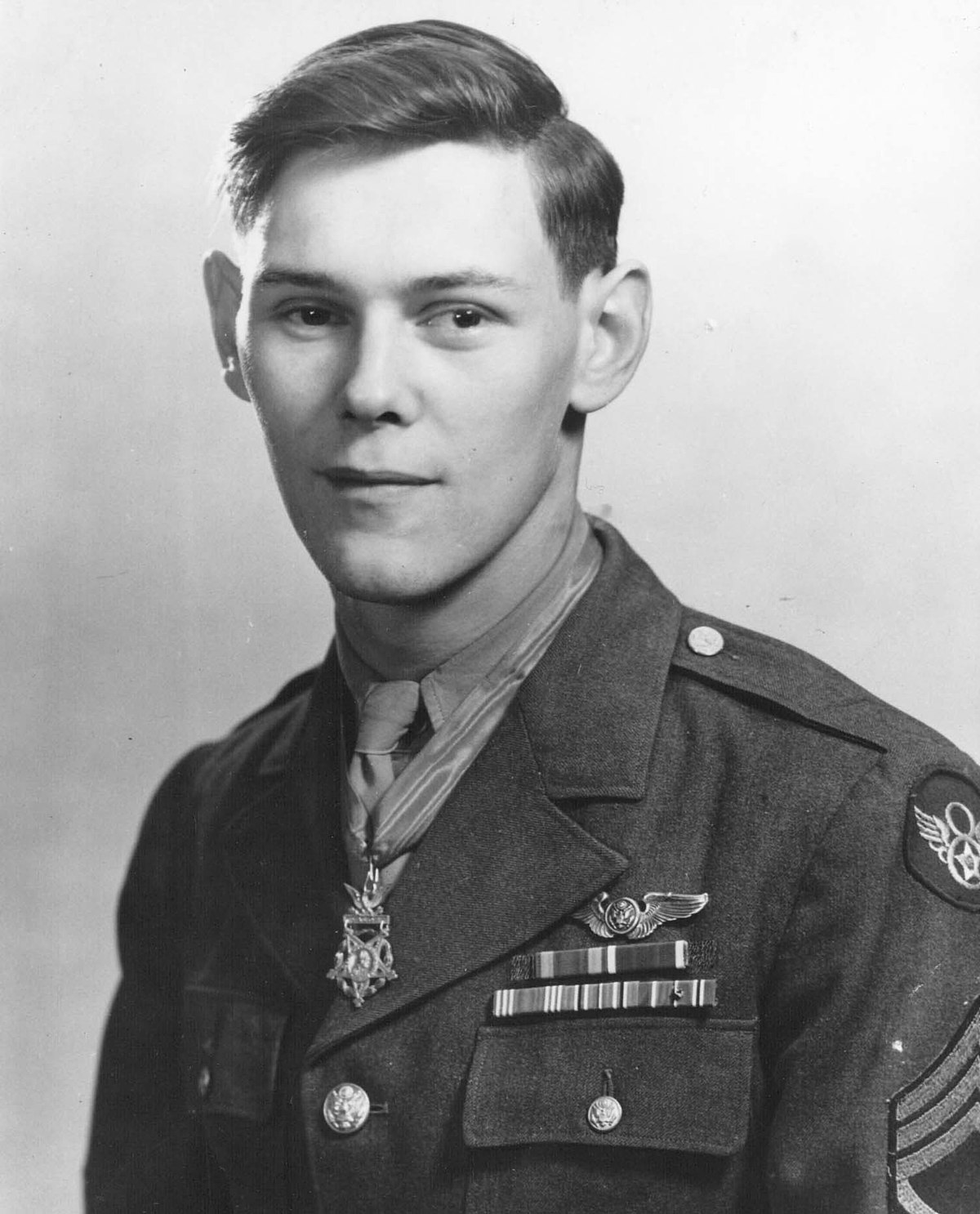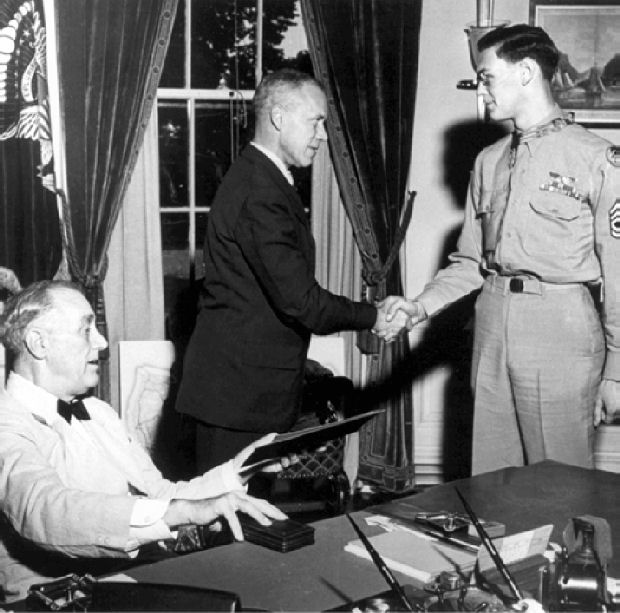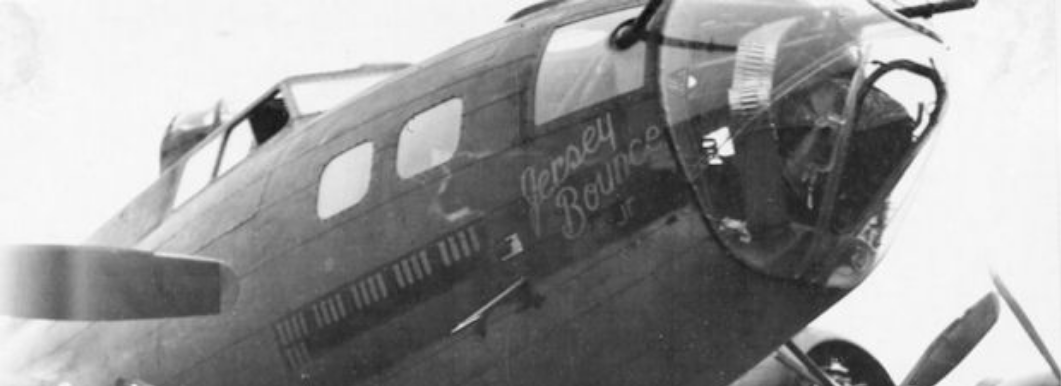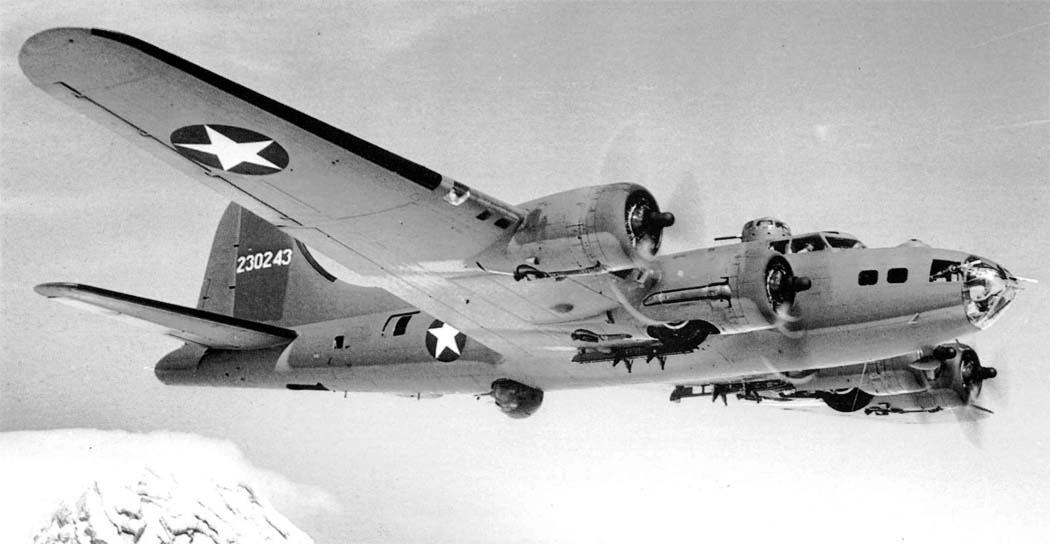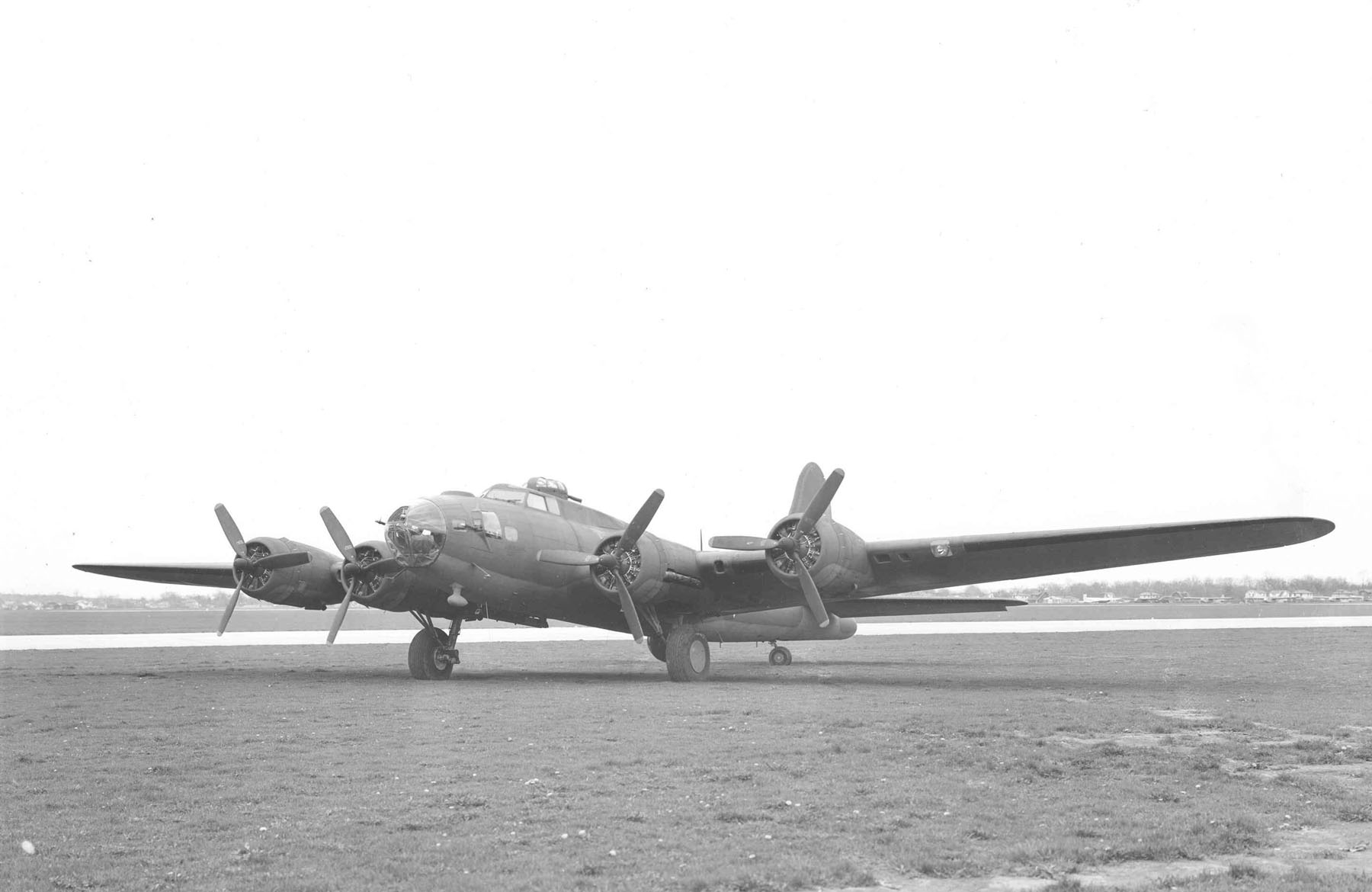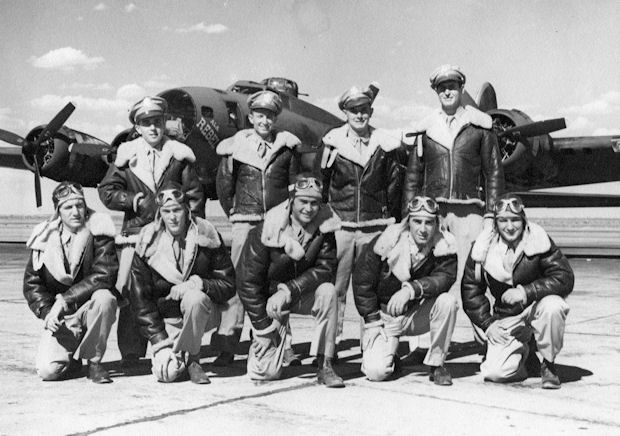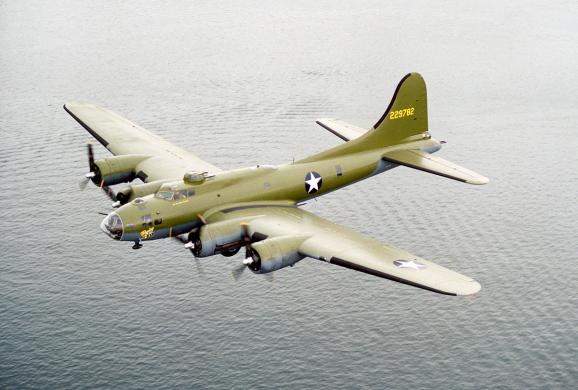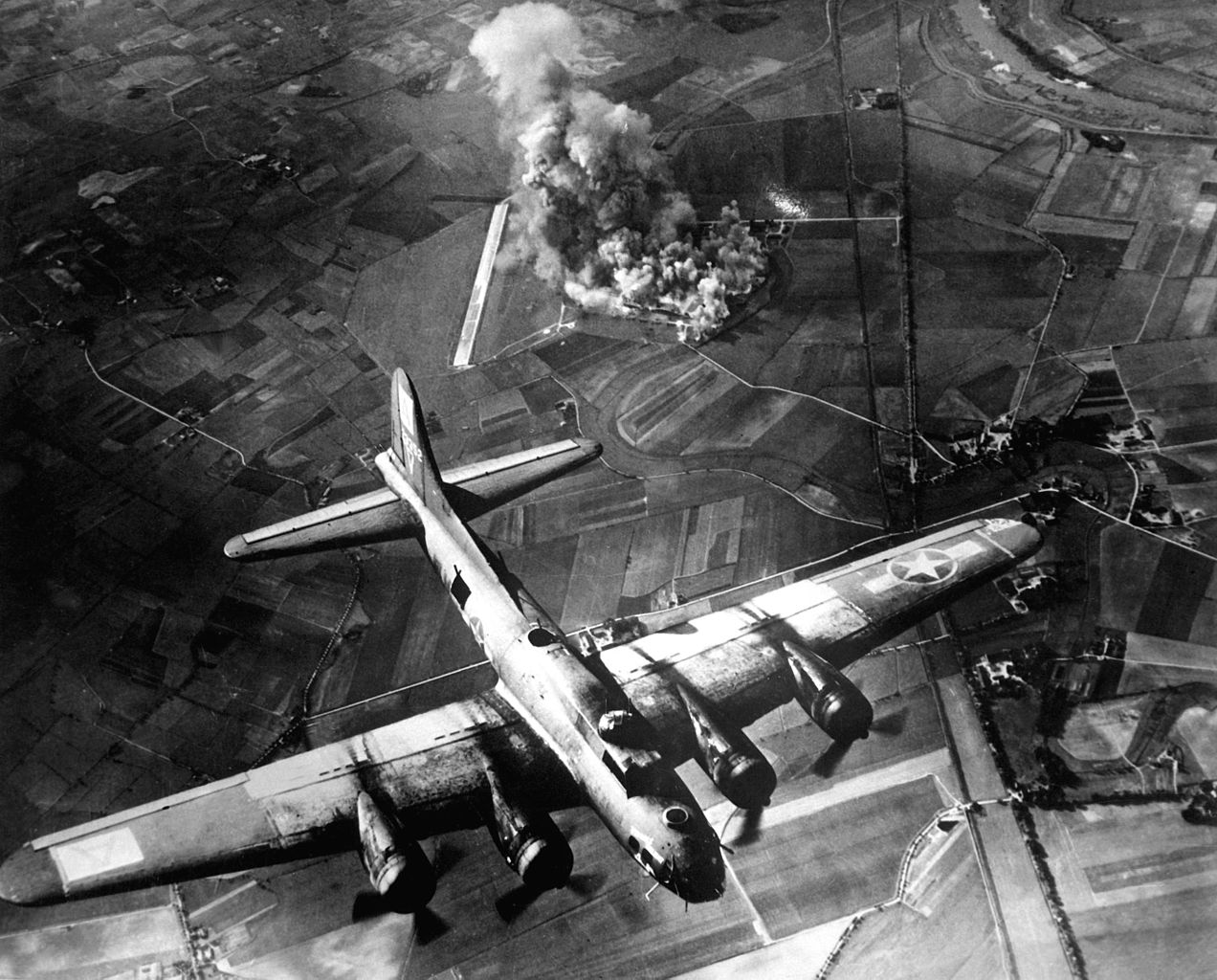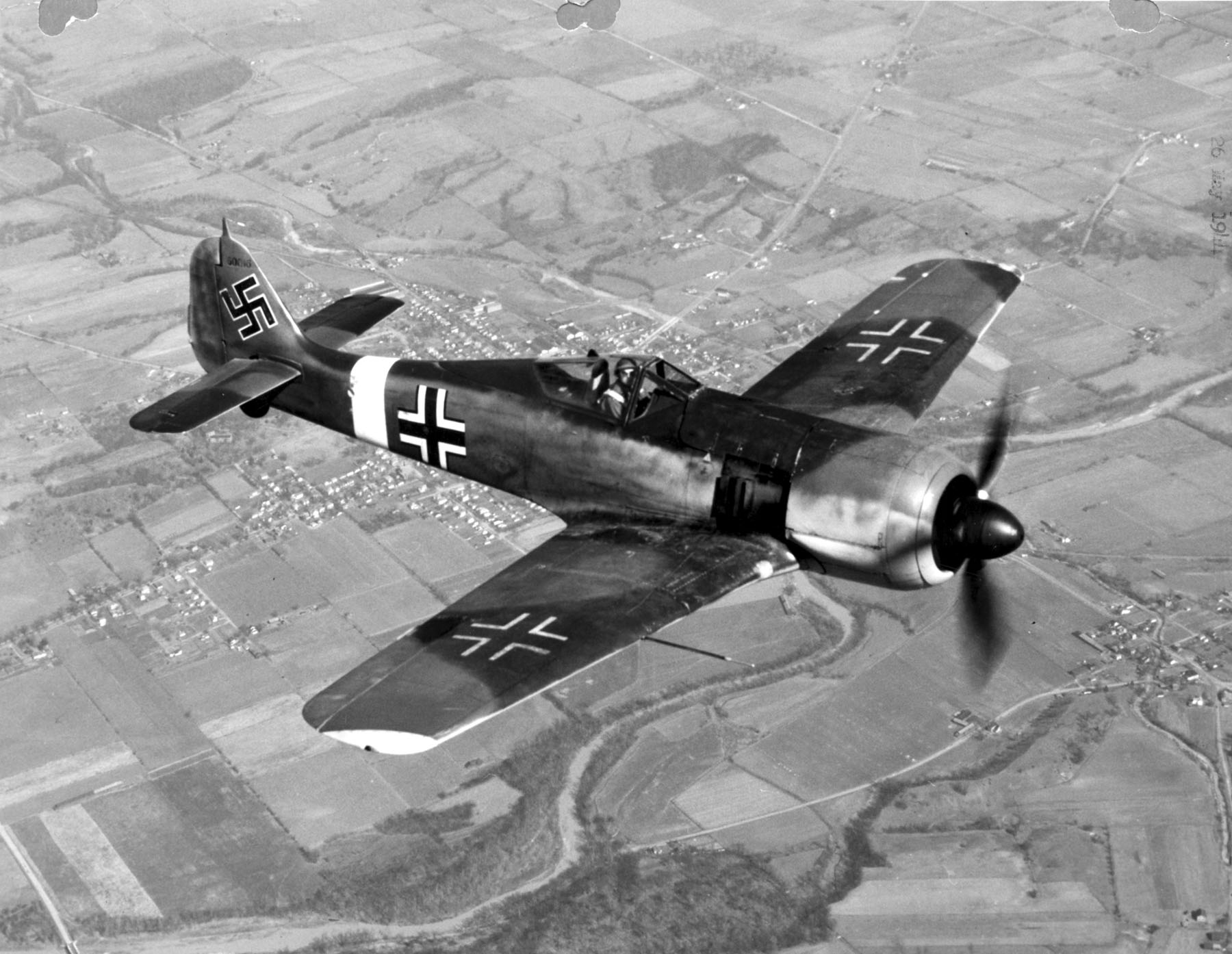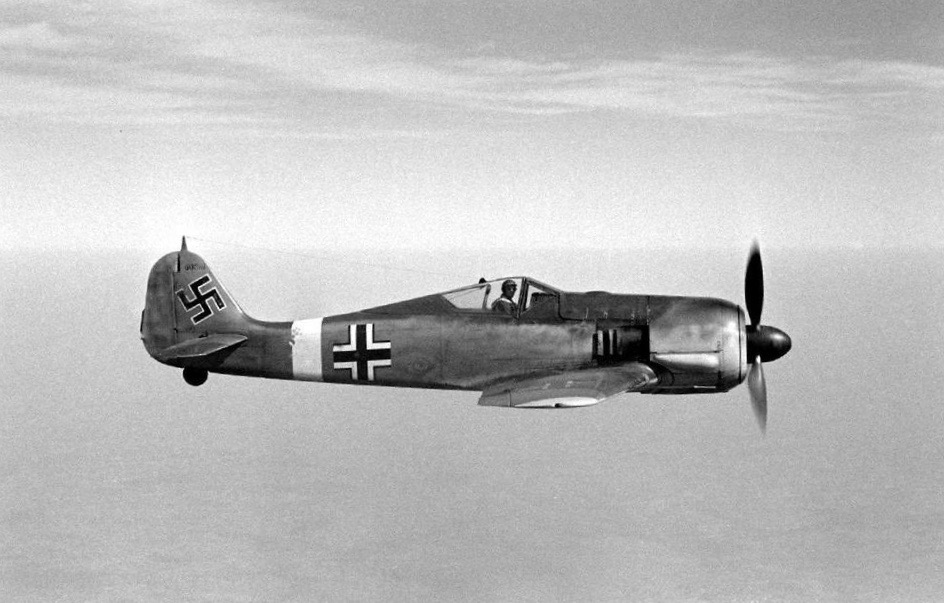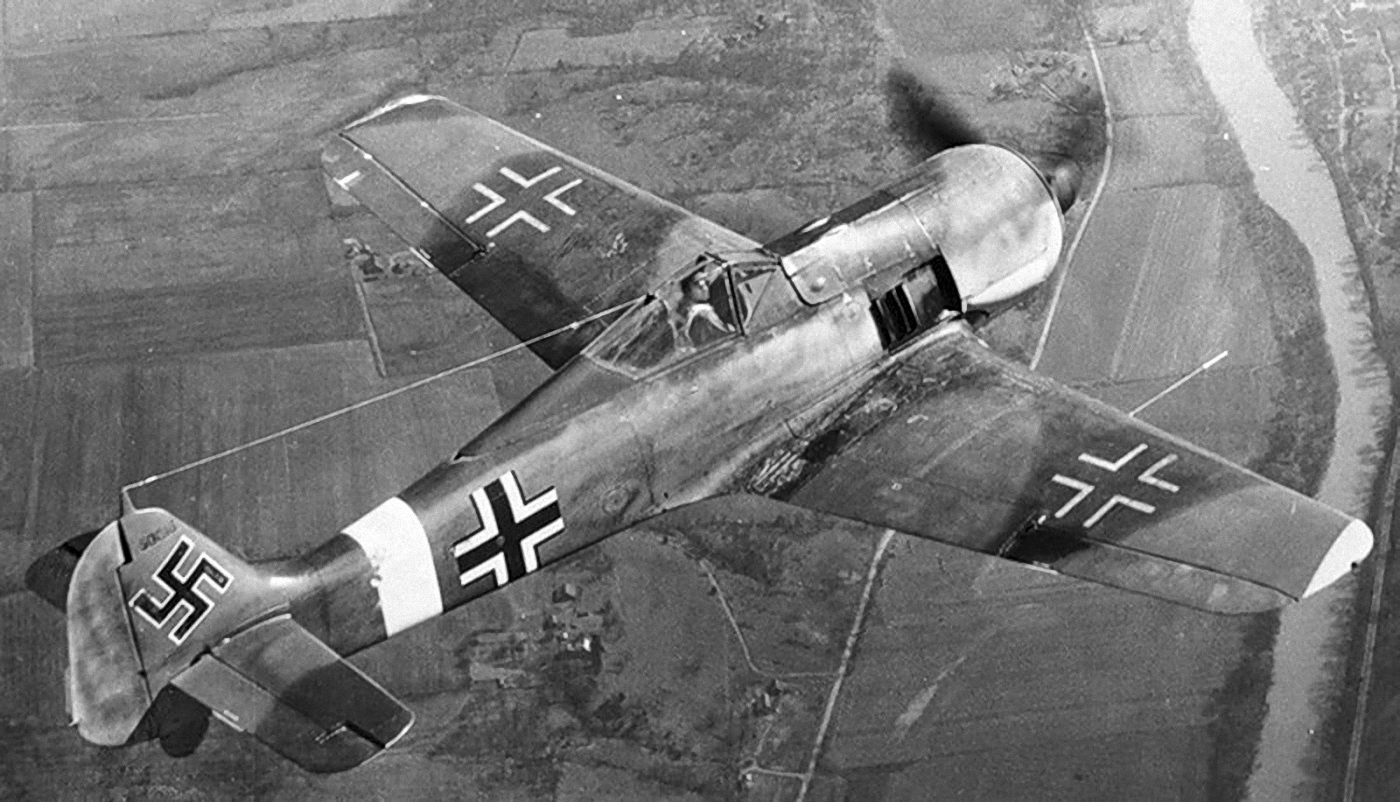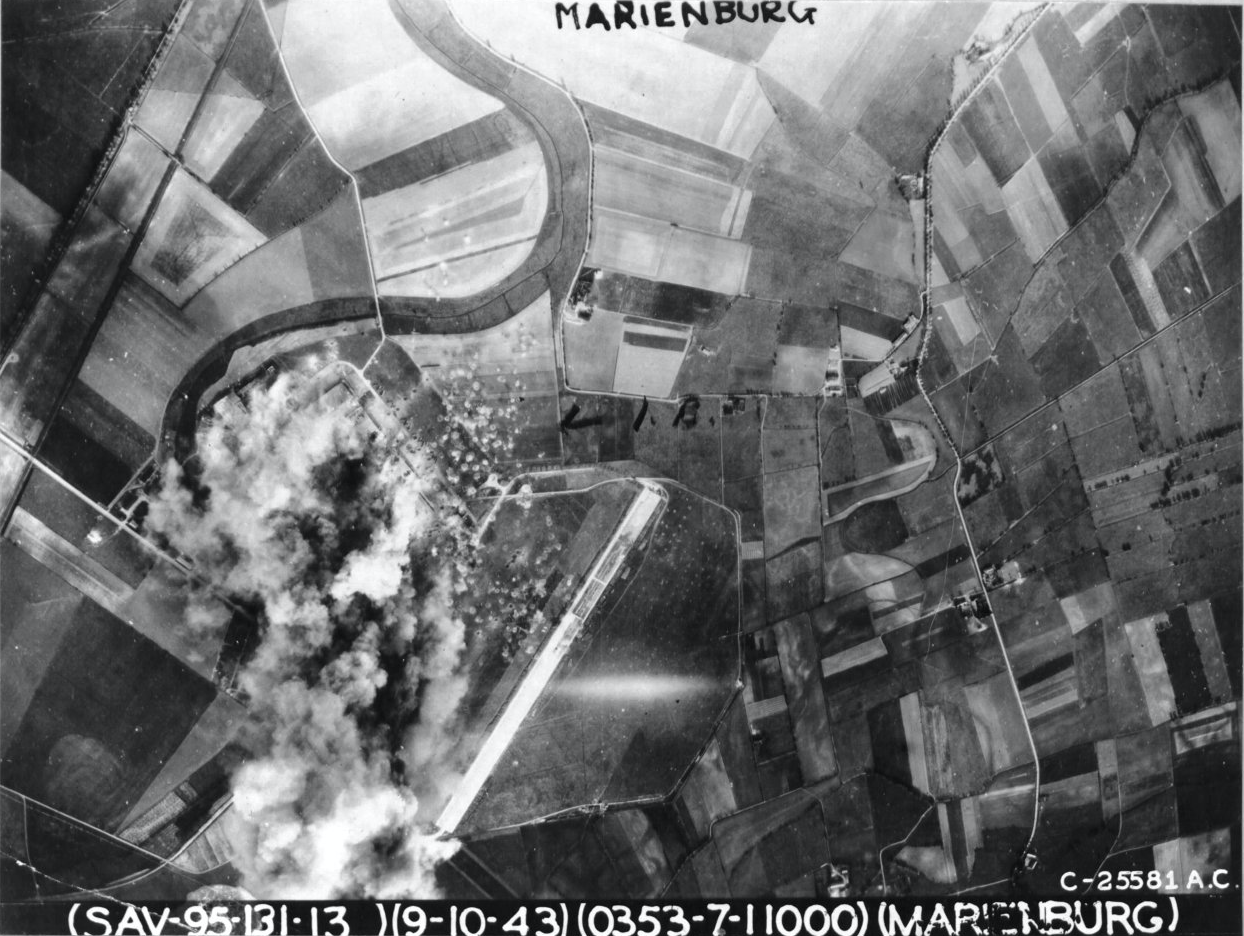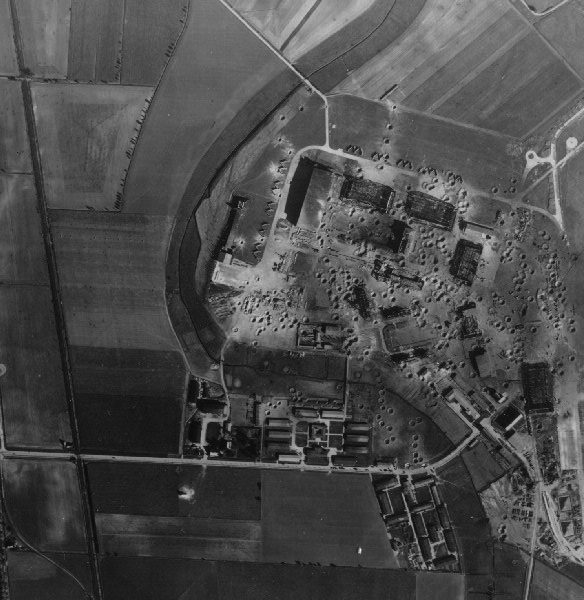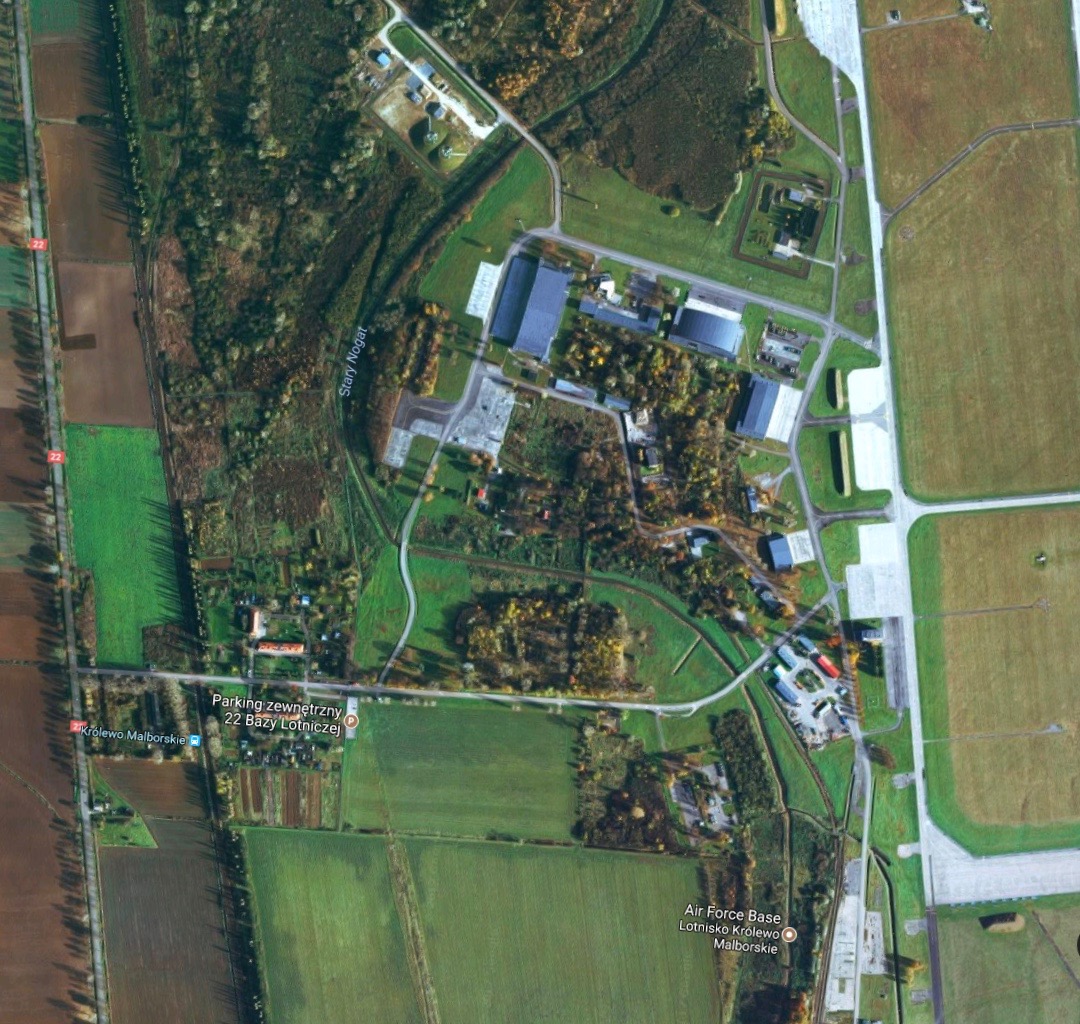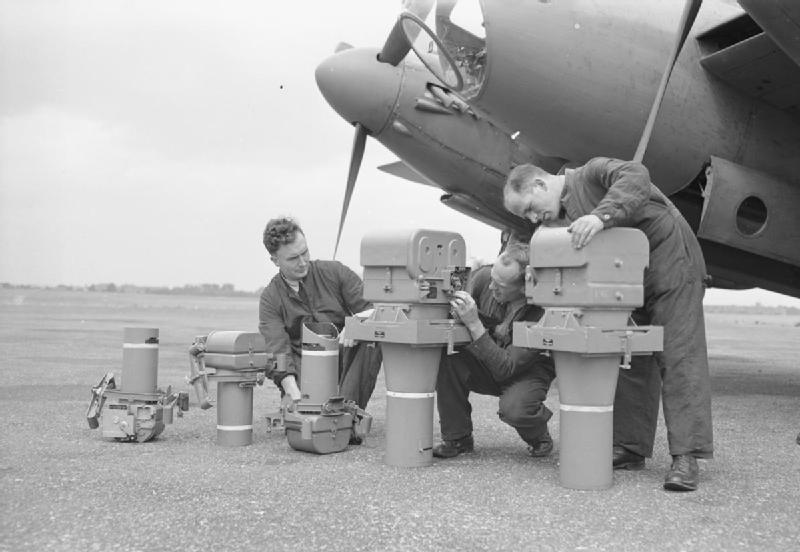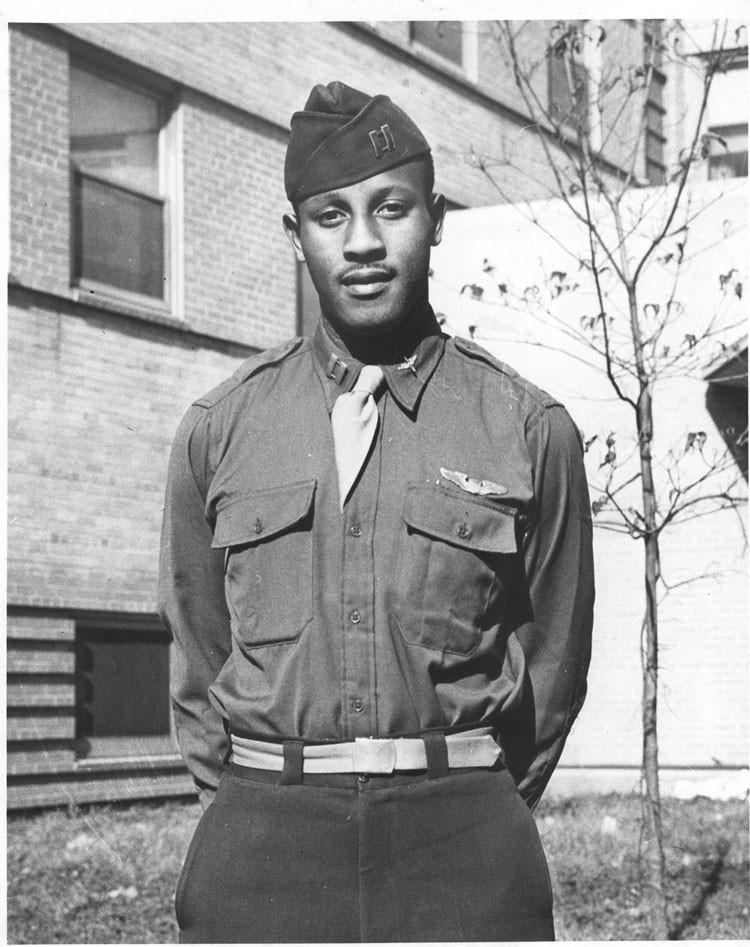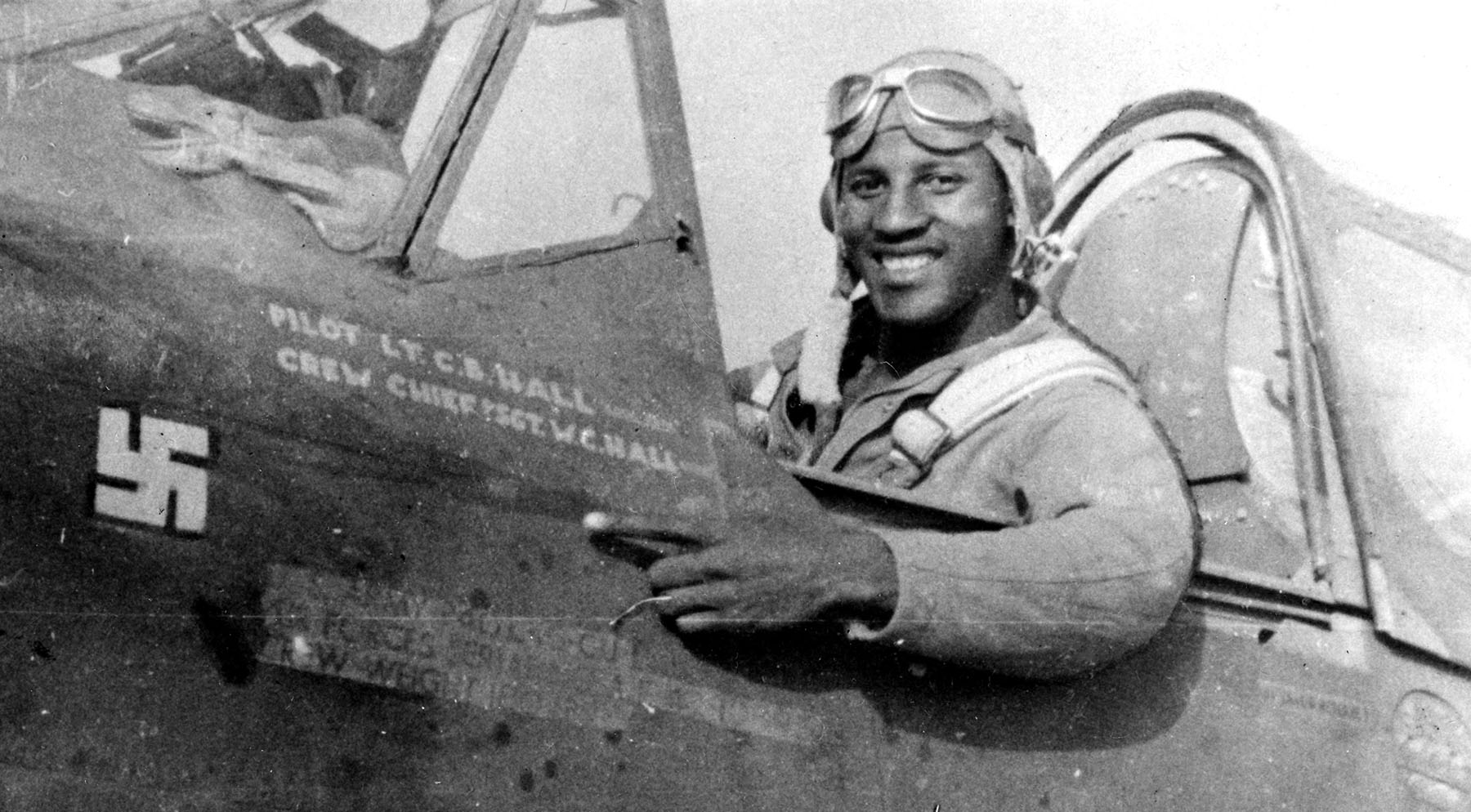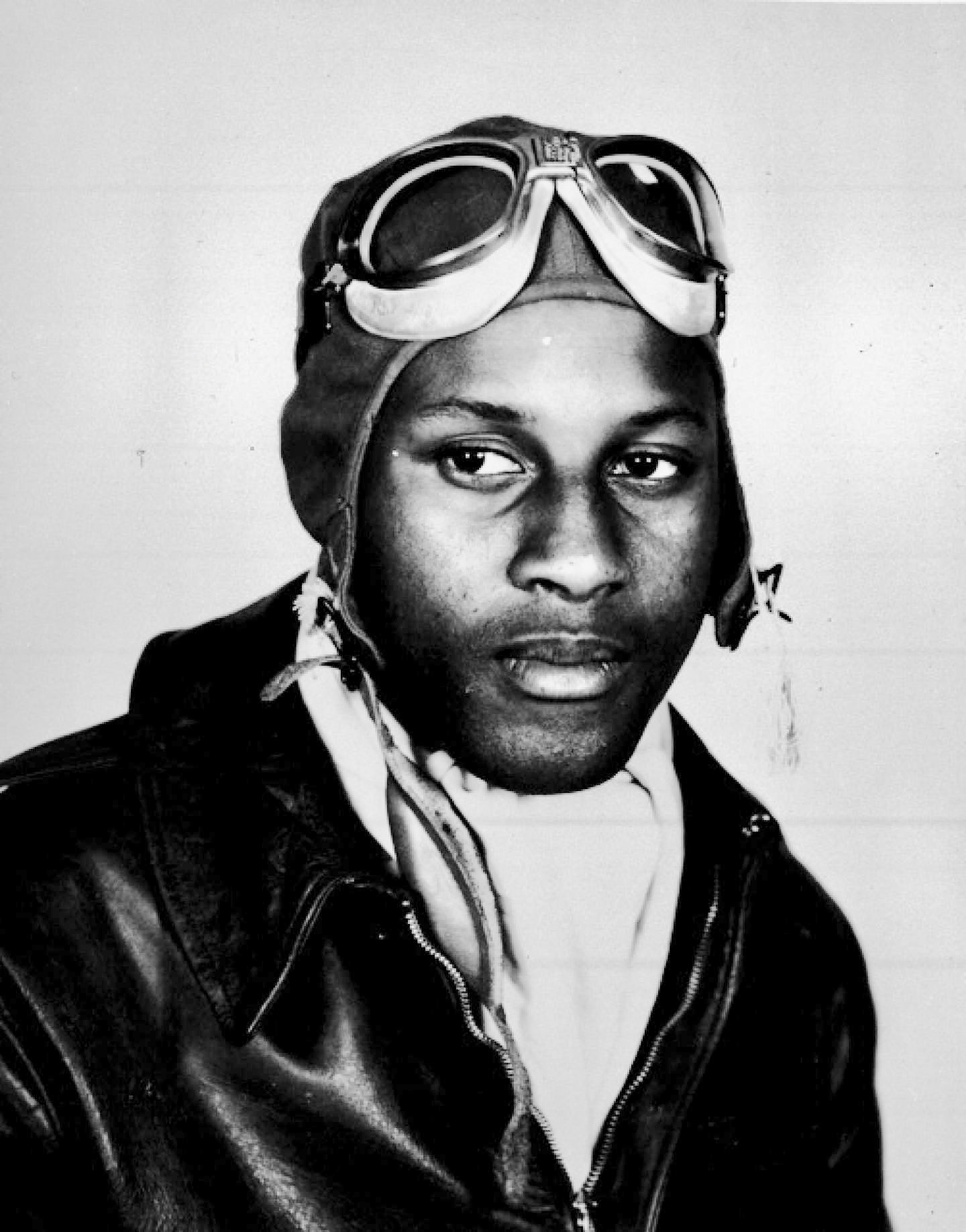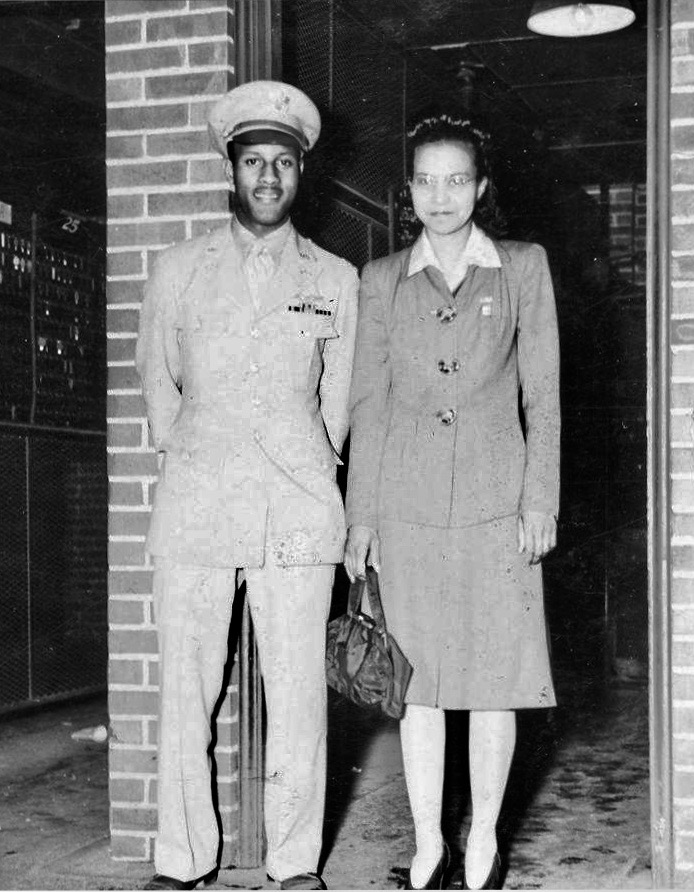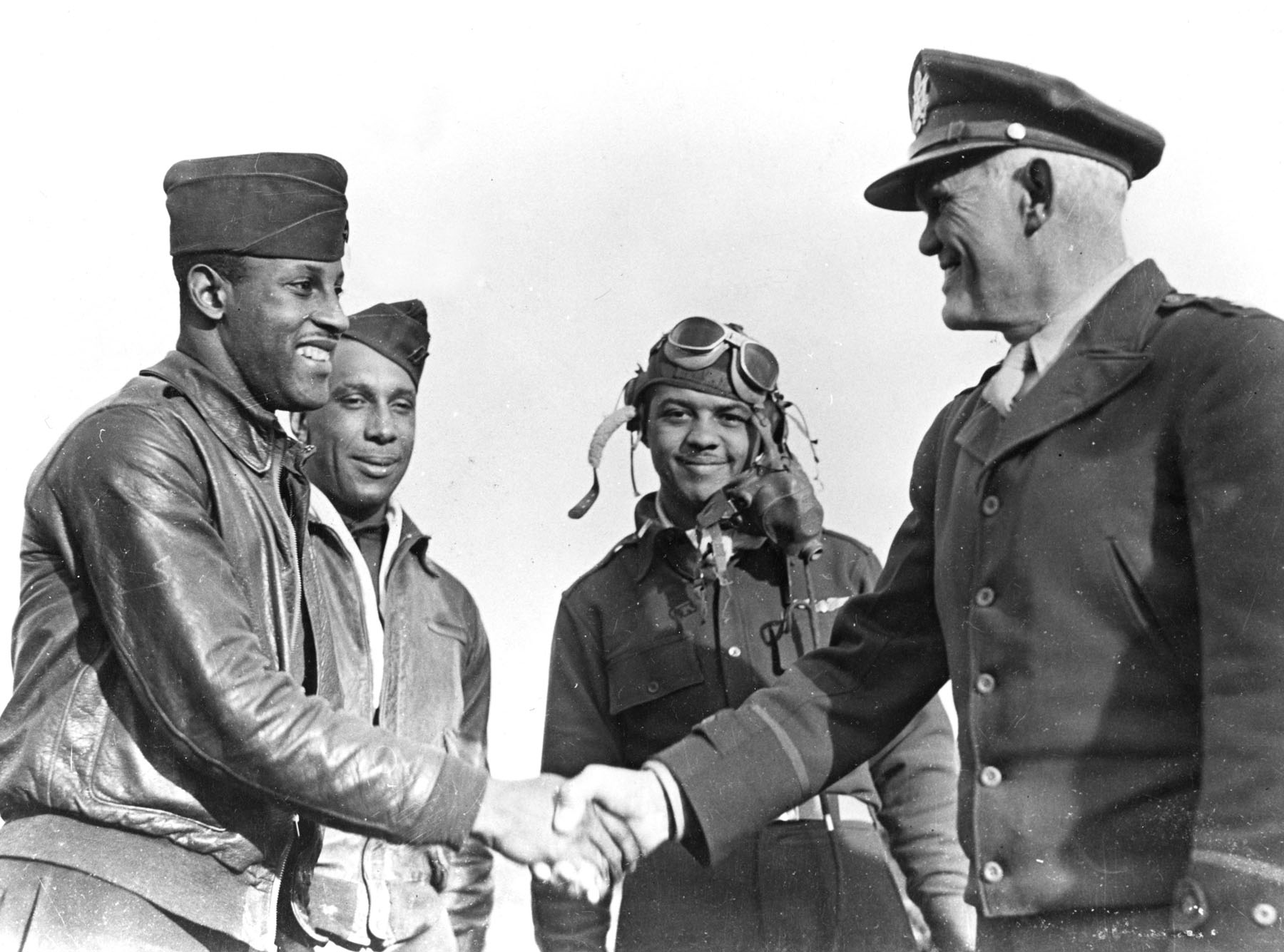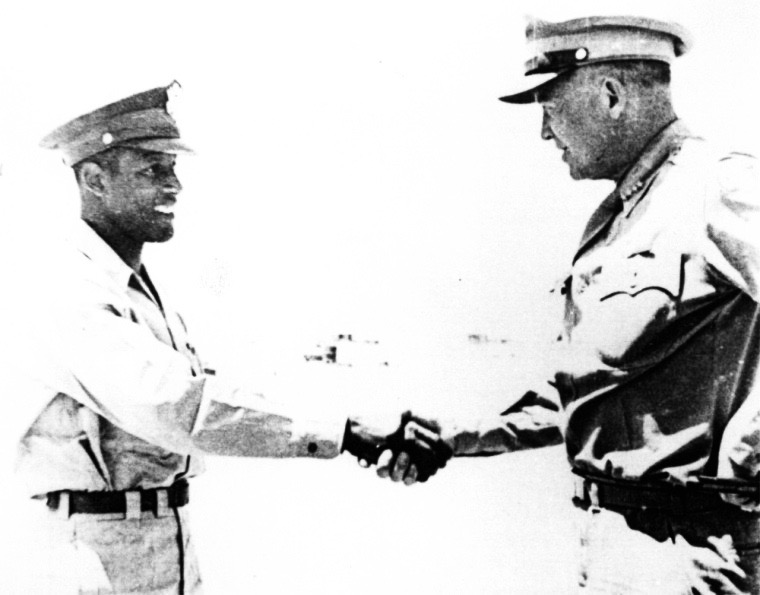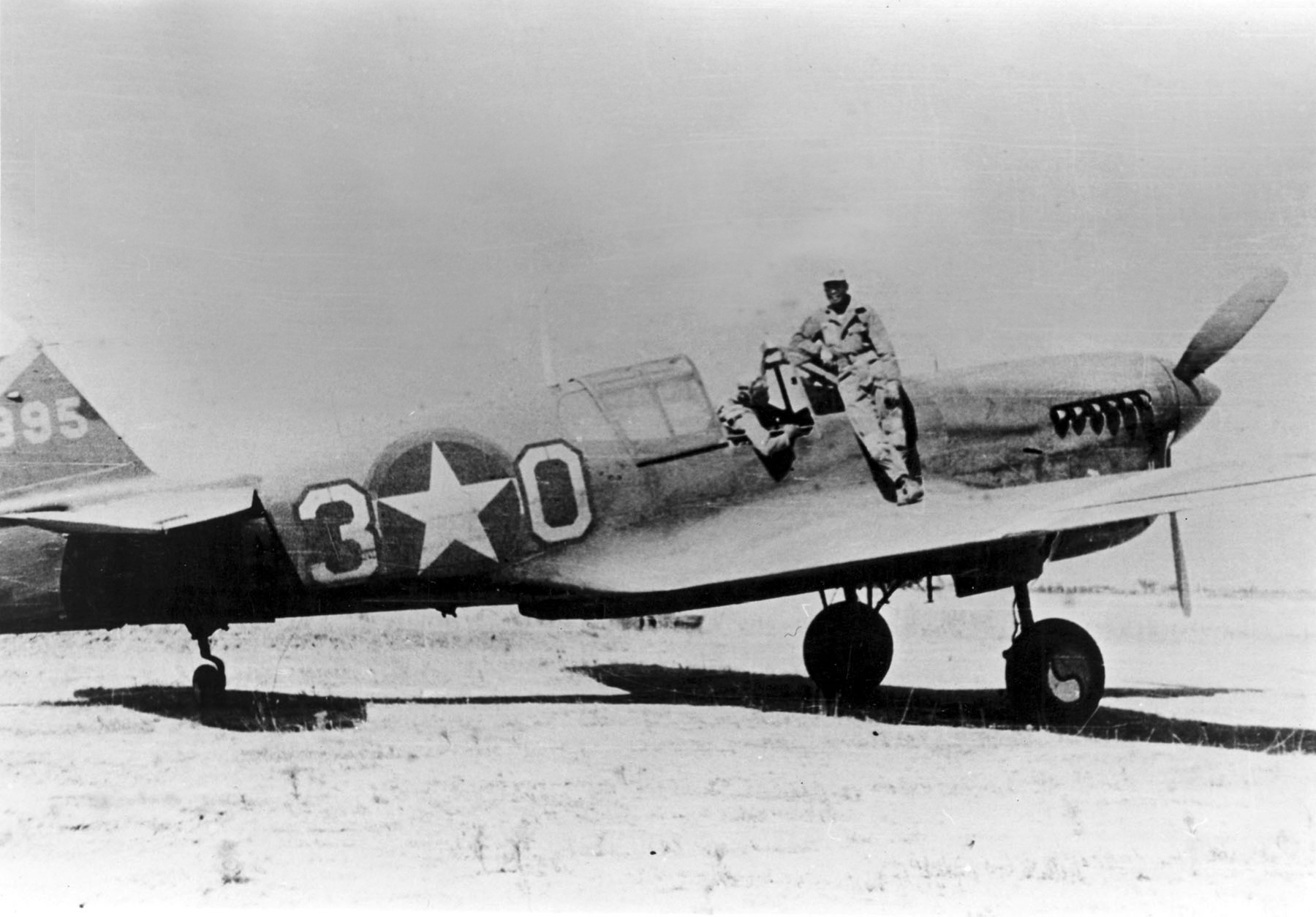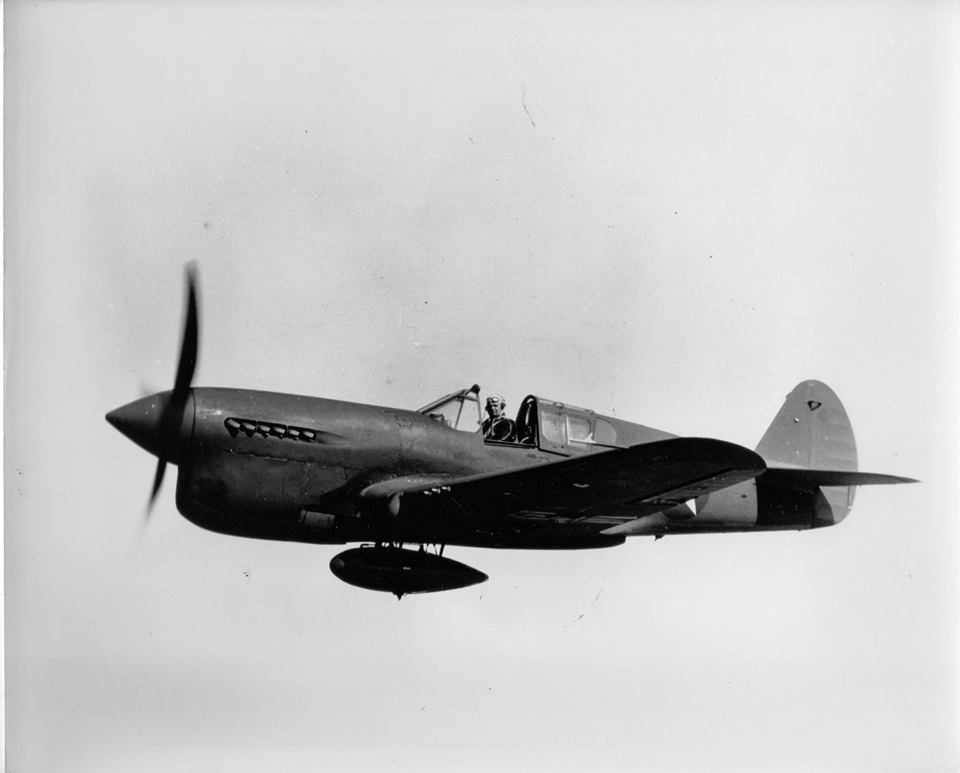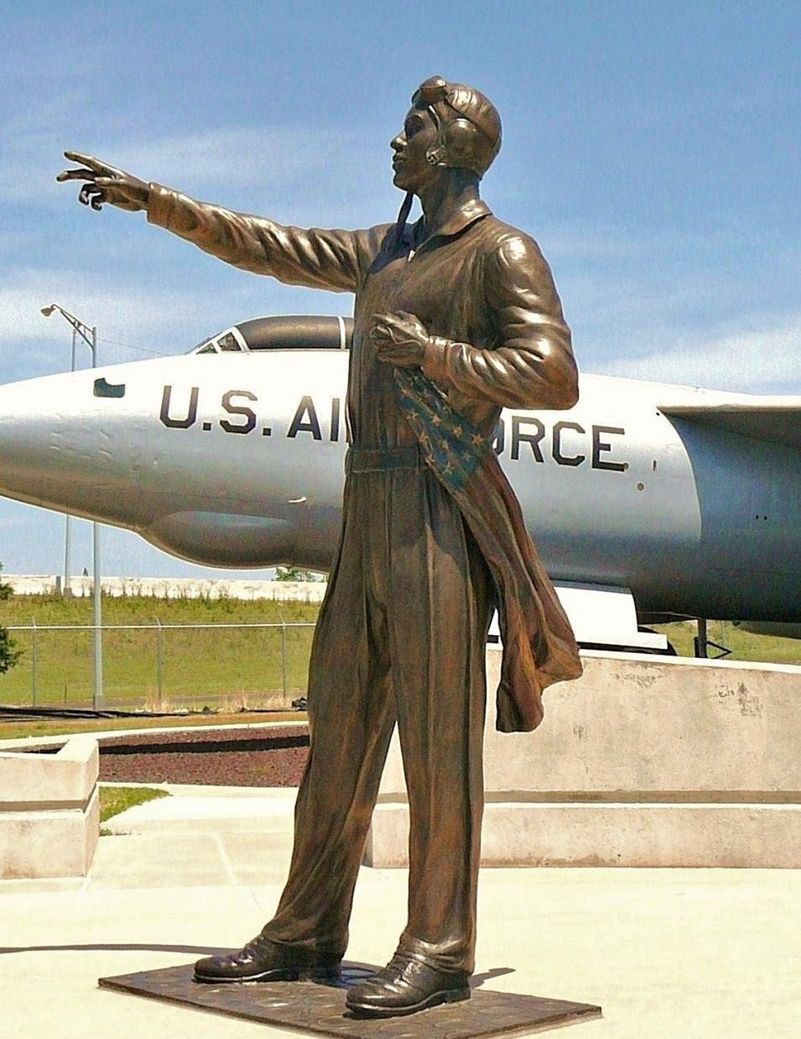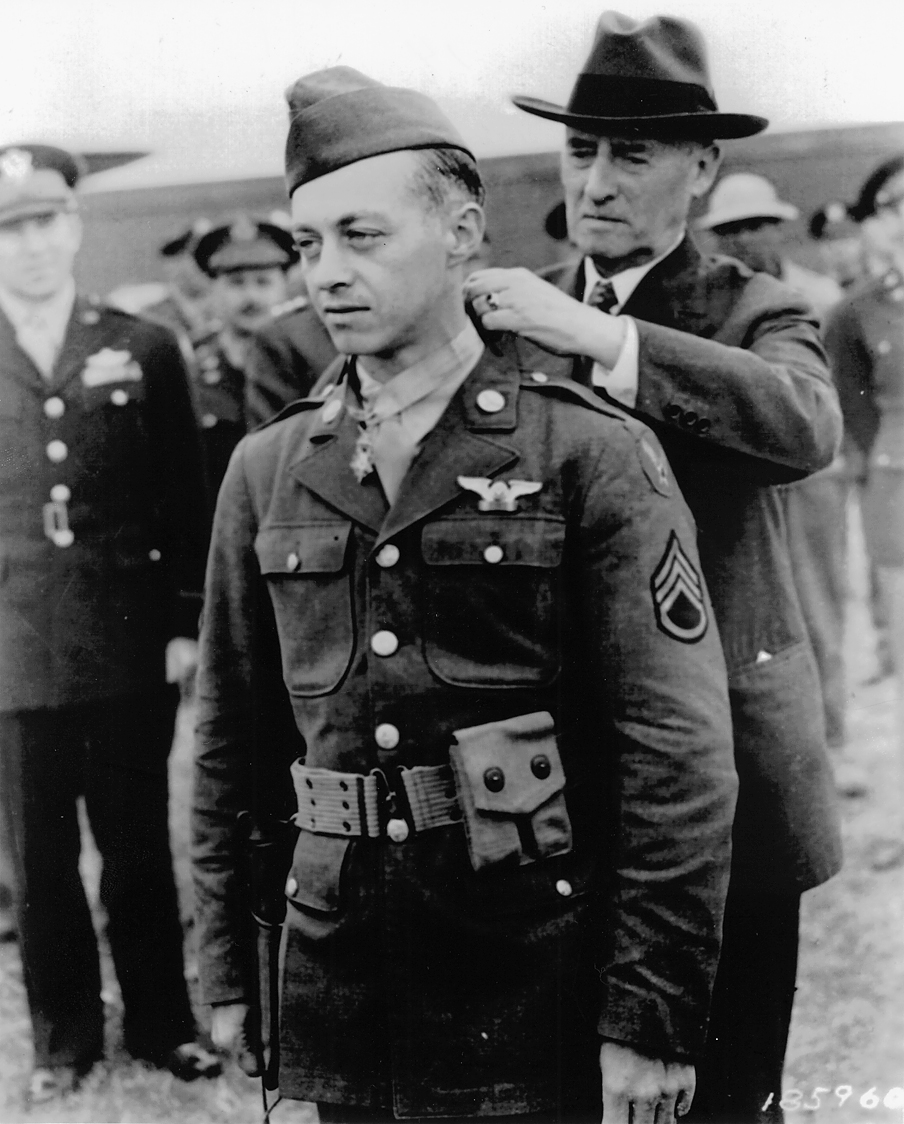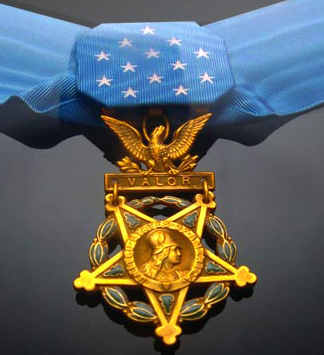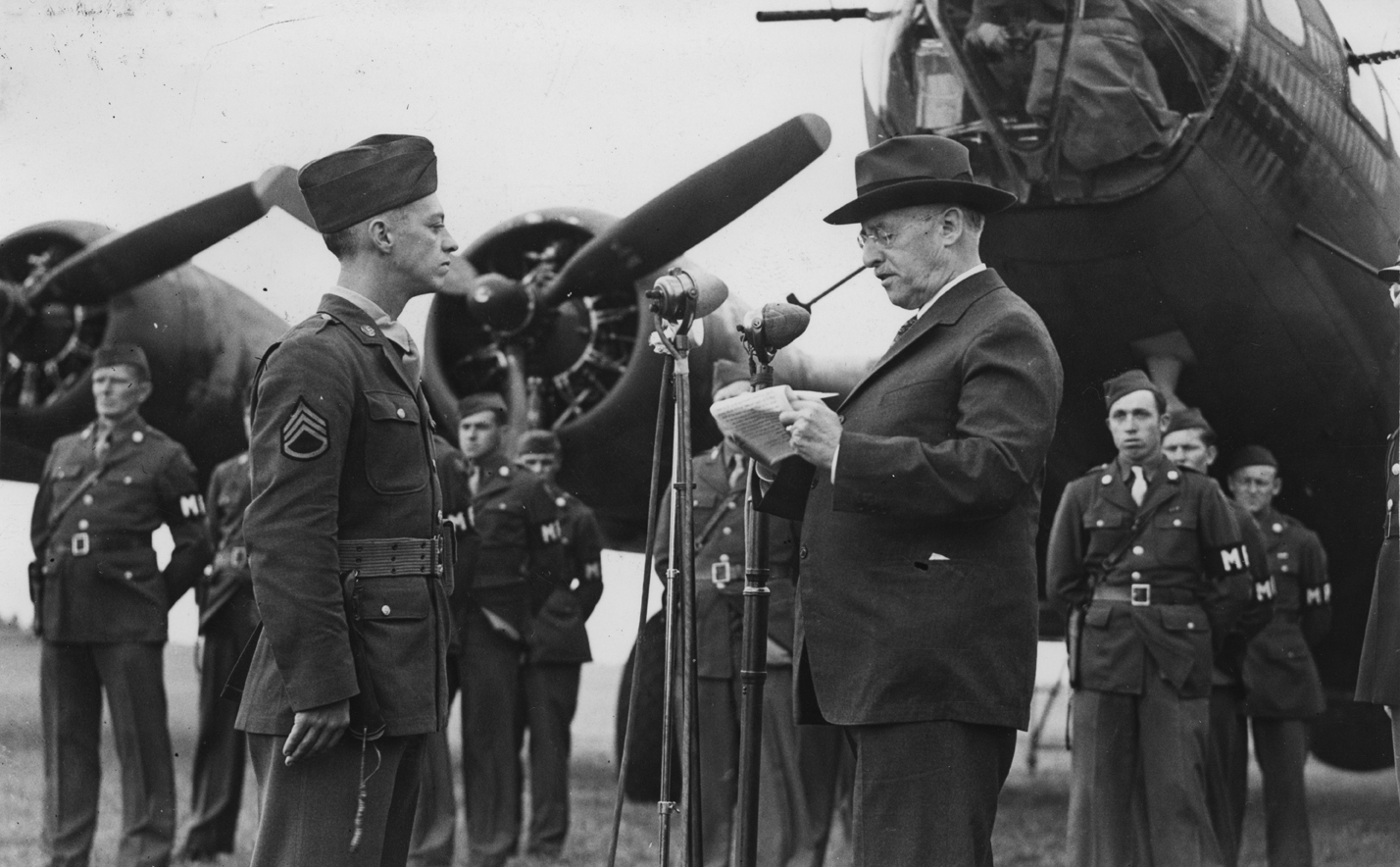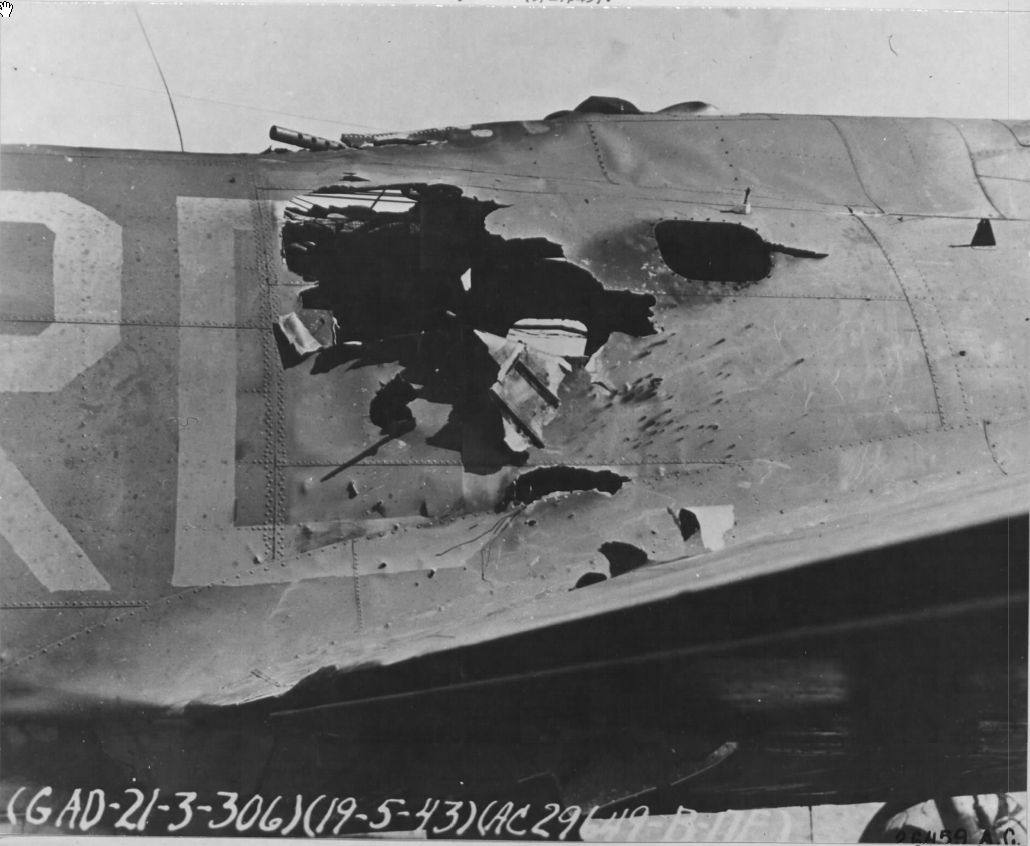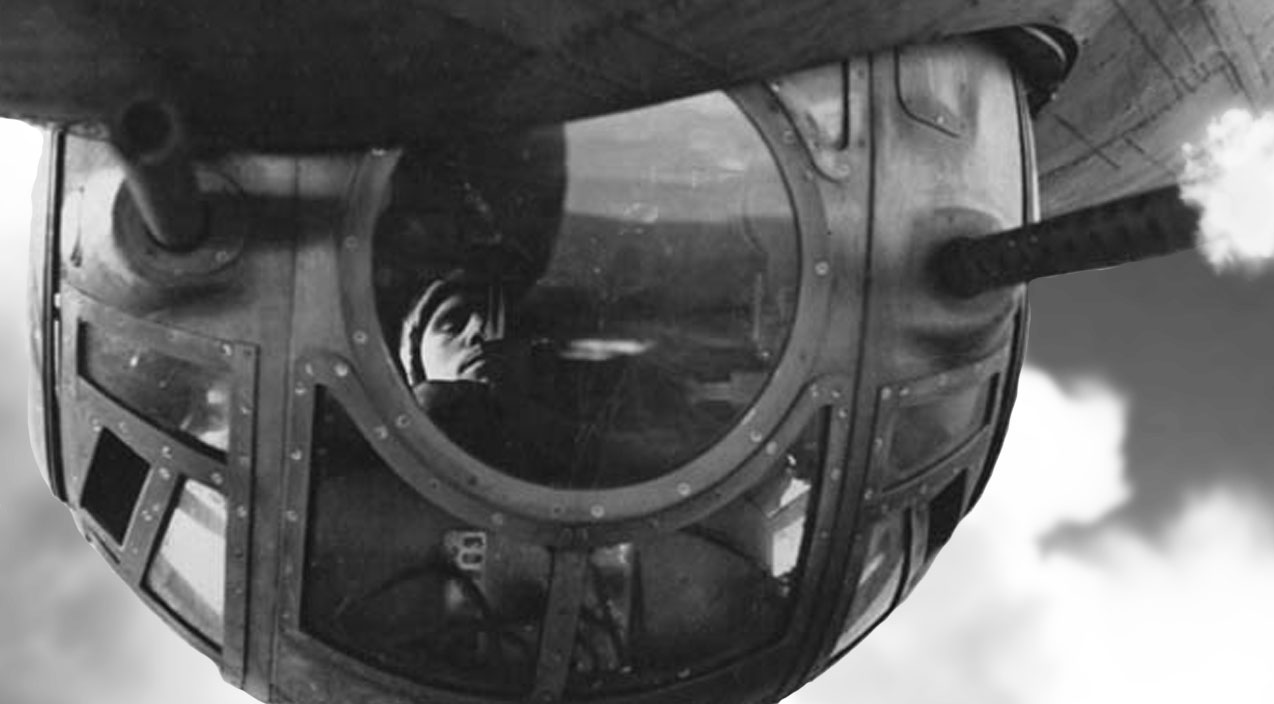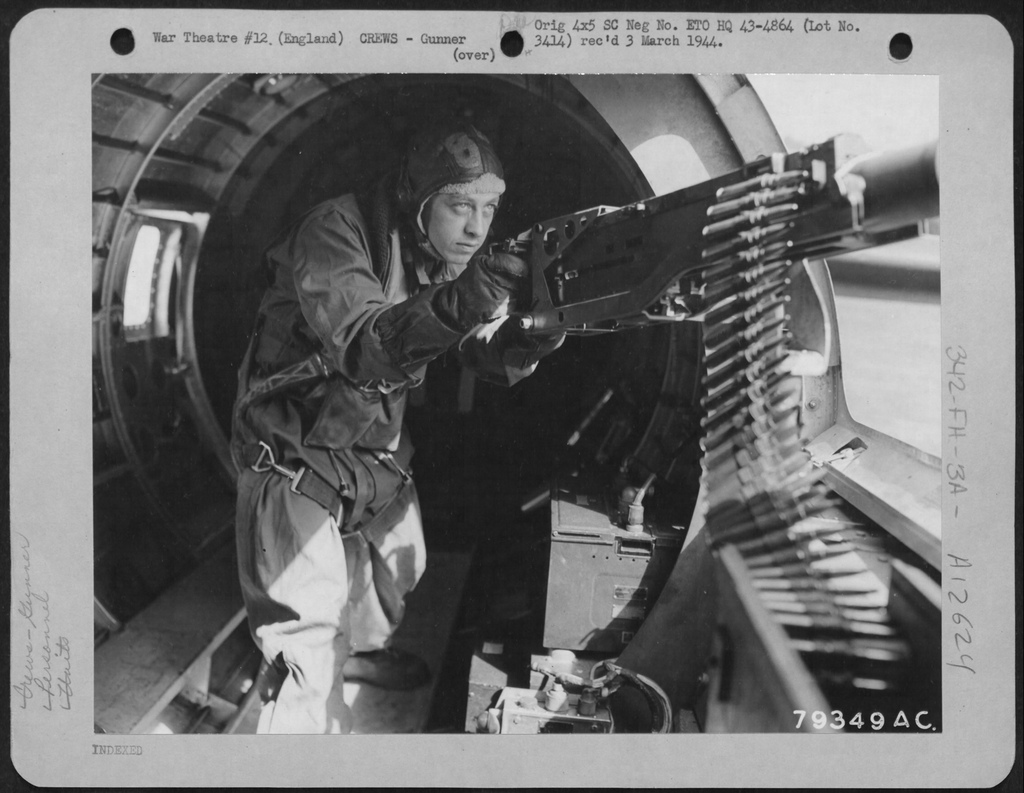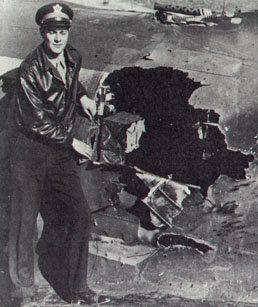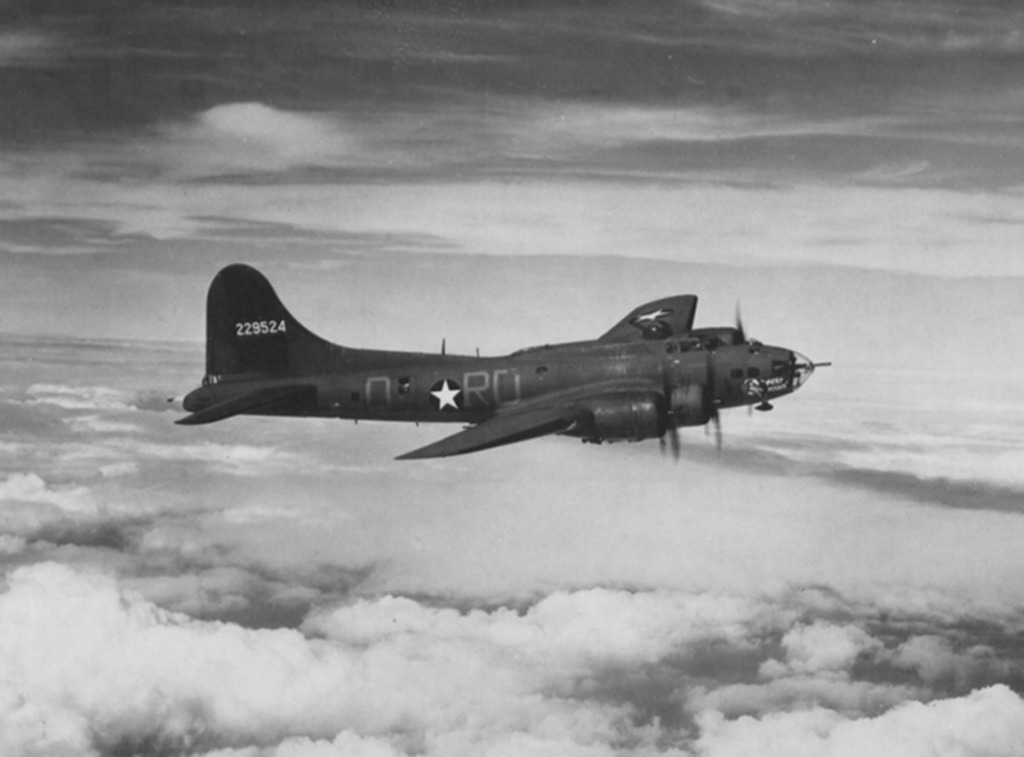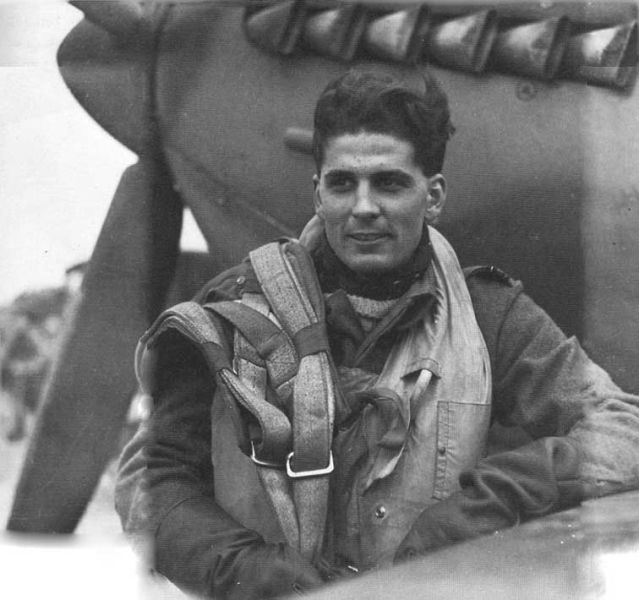
29 December 1944: Flying Officer Richard Joseph Audet, Royal Canadian Air Force, was a section leader of No. 411 Squadron, an RCAF squadron under the control of the Second Tactical Air Force, Royal Air Force. The squadron was based at an advanced airfield in The Netherlands.
In the early afternoon, Audet’s Yellow Section engaged a flight of twelve Luftwaffe fighters, four Messerchmitt Bf 109s and eight Focke-Wulf Fw 190s, near Rheine, in northwestern Germany.
Flying a Supermarine Spitfire LF Mk.IX .5, RR201, Flying Officer Audet led his section into the attack. He later reported:
I was leading Yellow section of 411 Squadron in the Rheine/Osnabruck area when Control reported Huns at Rheine and the squadron turned in that direction. An Me 262 was sighted and just at that time I spotted 12 e/a on our starboard side at 2 o’clock. These turned out to be a mixture of approximately 4 Me 109’s and 8 FW 190’s.
1) I attacked an Me 109 which was the last a/c in the formation of about twelve all flying line astern. At approximately 200 yds and 30° to starboard at 10,000 feet I opened fire and saw strikes all over the fuselage and wing roots. The 109 burst into flames on the starboard side of the fuselage only, and trailed intense black smoke. I then broke off my attack.
2) After the first attack I went around in a defensive circle at about 8500 feet until I spotted an FW 190 which I immediately attacked from 250 yards down to 100 yards and from 30° to line astern. I saw strikes over cockpit and to the rear of the fuselage. It burst into flames from the engine back, and as I passed very close over top of it I saw the pilot slumped over in his cockpit, which was also in flames.
3) My third attack followed immediately on the 2nd. I followed what I believed was an Me 109 in a slight dive. He then climbed sharply and his coupe top flew off at about 3 to 4,000 feet. I then gave a very short burst from about 300 yards and line astern and his aircraft whipped downwards in a dive. The pilot attempted or did bale out. I saw a black object on the edge of the cockpit but his ‘chute ripped to shreds. I then took cine shots of his a/c going to the ground and bits of parachute floating around. I saw this aircraft hit and smash into many flaming pieces on the ground. I do not remember any strikes on this aircraft. The Browning button only may have been pressed.
4) I spotted a FW 190 being pursued at about 5,000′ by a Spitfire which was in turn pursued by an FW 190. I called this Yellow section pilot to break and attacked the 190 up his rear. The fight went downwards in a steep dive. When I was about 250 yards and line astern of this 190 I opened fire. There were many strikes on the length of the fuselage and it immediately burst into flames. I saw this FW 190 go straight into the ground and burn.
5) Several minutes later while attempting to form my section up again I spotted an FW 190 from 4000 feet. He was at about 2000 feet. I dived down on him and he turned in to me from the right. Then he flipped around in a left hand turn and attempted a head-on attack. I slowed down to wait for the 190 to flypast in range. At about 200 yds and 20° I gave a very short burst, but couldn’t see any strikes. This a/c flicked violently, and continued to do so until he crashed into the ground. The remainder of my section saw this encounter and Yellow 4 (F/O McCracken) saw it crash in flames.
—Post Mission Report of Flying Officer R. J. Audet, 29 December 1944
This air battle had been Flying Officer Audet’s first engagement with enemy aircraft. It was over within a matter of minutes. For his actions of 29 December 1944, Richard Audet was awarded the Distinguished Flying Cross.
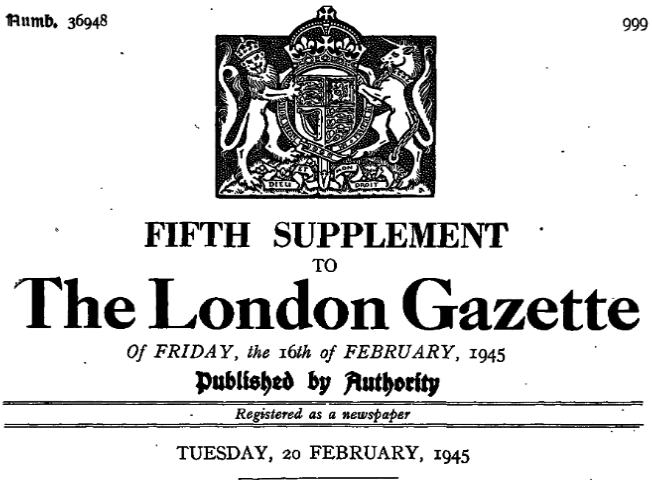 Air Ministry, 16th February, 1945.
Air Ministry, 16th February, 1945.
The KING has been graciously pleased to approve the following awards in recognition of gallantry and devotion to duty in the execution of air operations:—
Distinguished Flying Cross.
Flying Officer Richard Joseph Audet (Can/J.20136), R.C.A.F., 411 (R.C.A.F.) Sqn.
This officer has proved himself to be a highly skilled and courageous fighter. In December, 1944, the squadron was involved in an engagement against 12 enemy fighters in the Rheine/Osnabrück area. In a most spirited action, Flying Officer Audet achieved outstanding success by destroying 5 enemy aircraft. This feat is a splendid tribute to his brilliant shooting, great gallantry and tenacity.
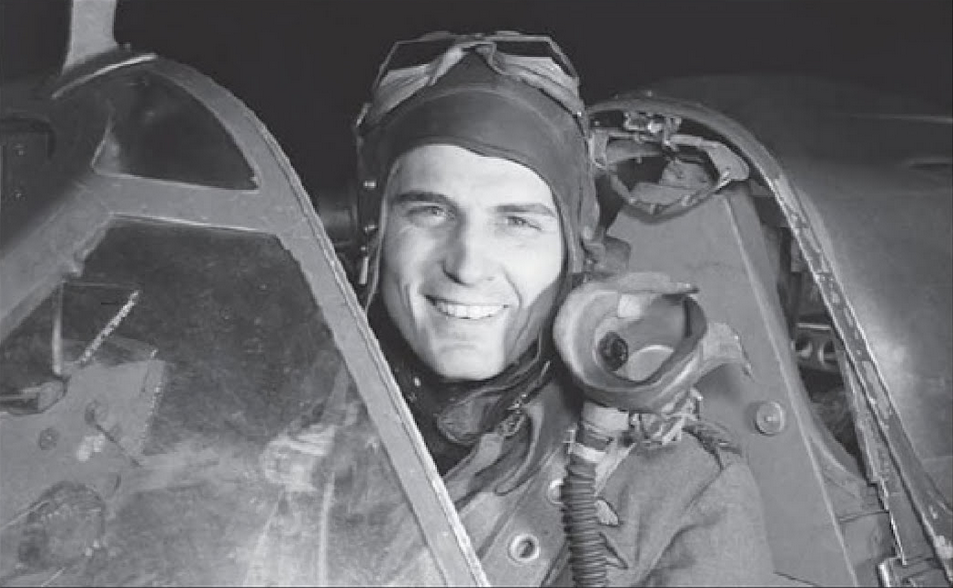
Richard Joseph Audet was born 13 March 1922 at Lethbridge, Alberta, Canada. He was the sixth child of Paul Audet, a rancher, and Ediwisca Marcoux Audet. “Dickie” Audet rode a horse to school at the age of ten years, traveling about 18 miles (29 kilometers) every morning.
Audet studied at Garbutt Business College in Lethbridge, and worked as a stenographer and bookkeeper at RCAF Air Station High River.
Dick Audet enlisted in the Royal Canadian Air Force at Calgary, Alberta, 28 August 1941. He was trained as a fighter pilot and was commissioned as a Pilot Officer, 24 October 1942. His pilot’s wings were presented to him by The Right Honourable William Lyon MacKenzie King, tenth Prime Minister of the Dominion of Canada.
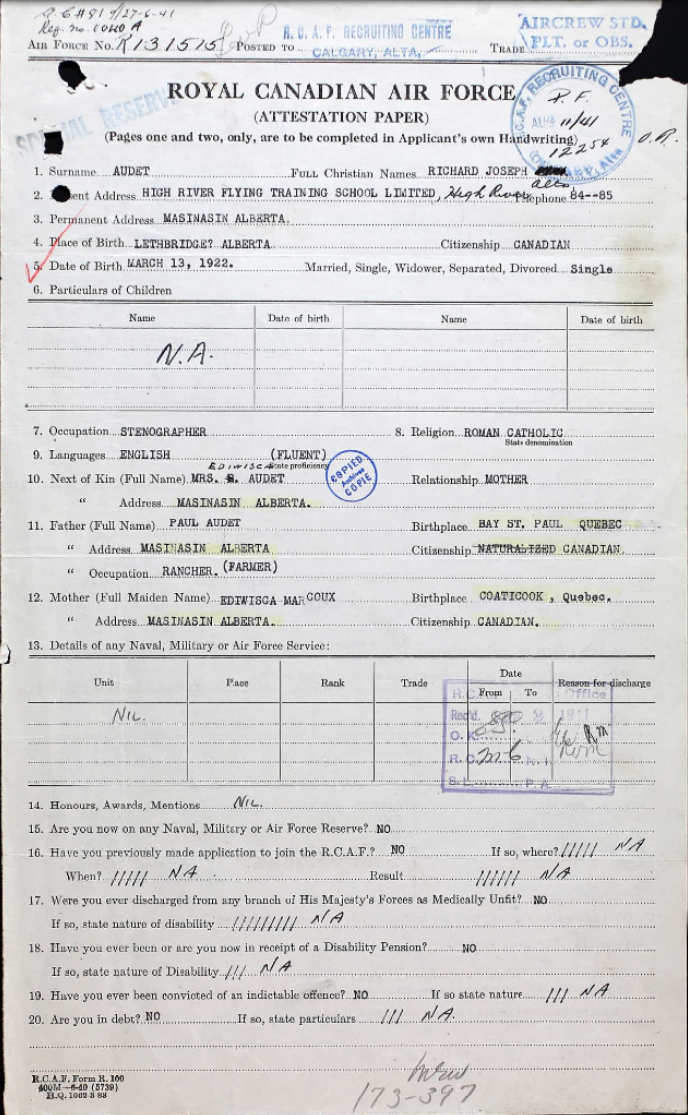
Pilot Officer Audet was sent to England, crossing the North Atlantic aboard ship and arriving 6 December 1942. He was assigned to the No. 6 Elementary Flying School at RAF Little Rissington, Gloucestershire, and then No. 17 Advanced Flying Unit at RAF Calvely, Nantwich, Cheshire. He was promoted to Flying Officer 23 April 1943, and transferred to No. 53 Operational Training Unit at RAF Heston, west of London, where he transitioned to the Supermarine Spitfire fighter.
Flying Officer Richard J. Audet married Miss Iris Christina Gibbons of Pinner, a village in the London Borough of Harrow, at Northhampton, Northamptonshire, England, 9 July 1944.
Audet joined No. 411 Squadron, Royal Canadian Air Force, 14 September 1944. He was promoted to the rank of Flight Lieutenant, 23 October 1944.
During January 1945, Flight Lieutenant Audet was credited with destroying another 6.5 enemy aircraft: 4.5 Focke-Wulf FW-190s (one shared) and two Messerschmitt Me 262 jet fighters (one on the ground), and a third Me 262, damaged.
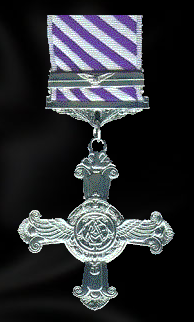
On 3 March 1945, Flight Lieutenant Audet was strafing railway trains near Coesfeld, Coesfelder Landkreis, Nordrhein-Westfalen, Germany, when his Spitfire LF Mk.IXE, MK950, was shot down. The Spitfire was seen to crash in flames and explode. Audet was listed as missing in action, and was presumed to have been killed. His remains were not recovered.
On 9 March 1945, Flight Lieutenant Richard Joseph Audet was posthumously awarded a Bar to his Distinguished Flying Cross (a second award).
There is no grave for Dick Audet. His name appears with those of 20,287 others on the Runnymede Memorial, Surrey, England, and among the nearly 400 on the Lethbridge Cenotaph at Lethbridge, Alberta. Audet Lake, north of Fort McMurray, Alberta, and Rue Richard Joseph Audet in Saugenay, Quebec, were named in his honor.

 The aircraft flown by Dick Audet on 29 December 1944, was a Supermarine Spitfire LF Mk.IX .5 (redesignated LF Mk.IXe in 1945), Royal Air Force serial number RR201. The identification letters on the fuselage were DB-G. It was built at built at the Castle Bromwich Aircraft Factory, at Warwickshire, West Midlands, in late summer or early fall 1944.
The aircraft flown by Dick Audet on 29 December 1944, was a Supermarine Spitfire LF Mk.IX .5 (redesignated LF Mk.IXe in 1945), Royal Air Force serial number RR201. The identification letters on the fuselage were DB-G. It was built at built at the Castle Bromwich Aircraft Factory, at Warwickshire, West Midlands, in late summer or early fall 1944.
The Supermarine Spitfire was a single-place, single-engine low-wing monoplane of all-metal construction with retractable landing gear. The fighter had been designed by Reginald Joseph Mitchell CBE. The prototype first flew 5 March 1936.
The Spitfire LF Mk.IXe was optimized for low-altitude operations. The Spitfire F Mk.Vb was 29 feet, 11 inches (9.119 meters) long with a wingspan of 36 feet, 10 inches (11.227 meters) and overall height of 11 feet, 5 inches (3.480 meters). The exact dimensions of the LF Mk.IXe are not known but are presumably similar. Some Mk.IXe fighters had “clipped” wings, while others did not.
The LF Mk.IXe had an empty weight of 5,749 pounds (2,608 kilograms) and gross weight of 7,450 pounds (3,379 kilograms).
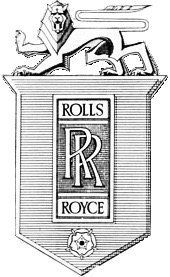 The Spitfire LF Mk.IXe was powered a liquid-cooled, supercharged, 1,648.959-cubic-inch-displacement (27.022 liters) Rolls-Royce Merlin 66 single overhead camshaft (SOHC) 60° V-12 engine with a compression ratio of 6.00:1. It was equipped with a two-speed, two-stage supercharger. The Merlin 66 was rated at 1,315 horsepower at 3,000 r.p.m. and 12 pounds per square inch boost (0.83 Bar), for Take Off; 1,705 horsepower at 3,000 r.p.m. at 5,750 feet (1,753 meters) and 1,580 horsepower at 3,000 r.p.m. at 16,000 feet (4,877 meters), with 18 pounds boost (1.24 Bar). These power ratings were obtained with 130-octane aviation gasoline. When 150-octane gasoline became available, the Merlin 66 was cleared to use 25 pounds of boost (1.72 Bar). The Merlin 66 had a propeller gear reduction ratio of 0.477:1 and drove a four-bladed Rotol Hydulignum (compressed laminated wood) propeller with a diameter of 10 feet, 9 inches (3.277 meters). The engine weighed 1,645 pounds (746 kilograms).
The Spitfire LF Mk.IXe was powered a liquid-cooled, supercharged, 1,648.959-cubic-inch-displacement (27.022 liters) Rolls-Royce Merlin 66 single overhead camshaft (SOHC) 60° V-12 engine with a compression ratio of 6.00:1. It was equipped with a two-speed, two-stage supercharger. The Merlin 66 was rated at 1,315 horsepower at 3,000 r.p.m. and 12 pounds per square inch boost (0.83 Bar), for Take Off; 1,705 horsepower at 3,000 r.p.m. at 5,750 feet (1,753 meters) and 1,580 horsepower at 3,000 r.p.m. at 16,000 feet (4,877 meters), with 18 pounds boost (1.24 Bar). These power ratings were obtained with 130-octane aviation gasoline. When 150-octane gasoline became available, the Merlin 66 was cleared to use 25 pounds of boost (1.72 Bar). The Merlin 66 had a propeller gear reduction ratio of 0.477:1 and drove a four-bladed Rotol Hydulignum (compressed laminated wood) propeller with a diameter of 10 feet, 9 inches (3.277 meters). The engine weighed 1,645 pounds (746 kilograms).
The Spitfire LF Mk.IXe had cruise speed of 220 miles per hour (354 kilometers per hour) at 20,000 feet (6,096 meters); a maximum speed of 384 miles per hour (618 kilometers per hour) at 10,500 feet (3,200 meters), and 404 miles per hour (650 kilometers per hour) at 21,000 feet (6,401 meters). Diving speed was restricted to 450 miles per hour (724 kilometers per hour) below 20,000 feet (6,096 meters). The airplane’s service ceiling was 42,500 feet (12,954 meters).
The Spitfire LF Mk.IXe was armed with two 20-milimeter Hispano Mk.II autocannon, with 135 rounds of ammunition per gun, and two Browning AN-M2 .50-caliber machine guns, with 260 rounds per gun. The .50-caliber machine guns were mounted in the wings, just inboard of the 20 mm cannon.
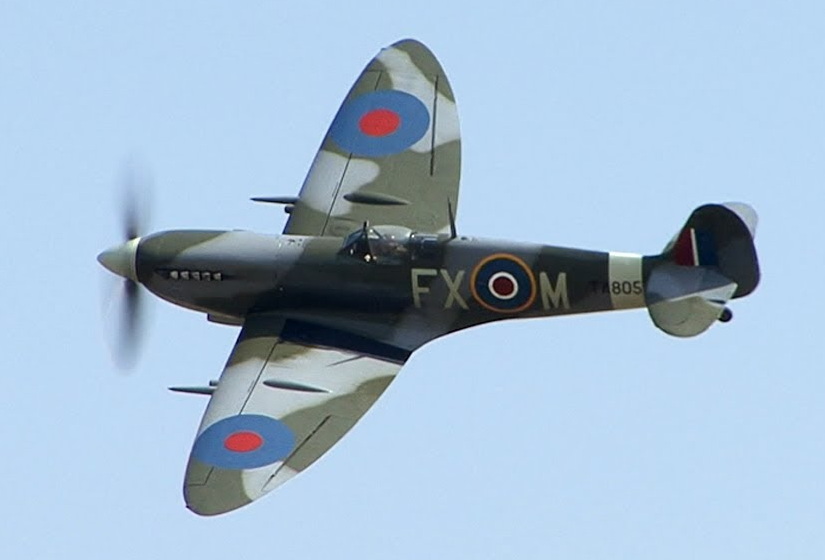
© 2018, Bryan R. Swopes
